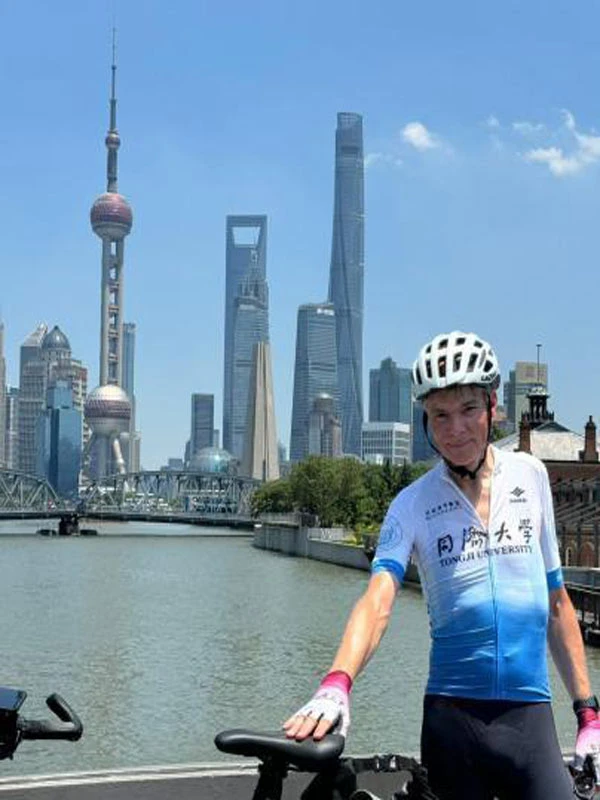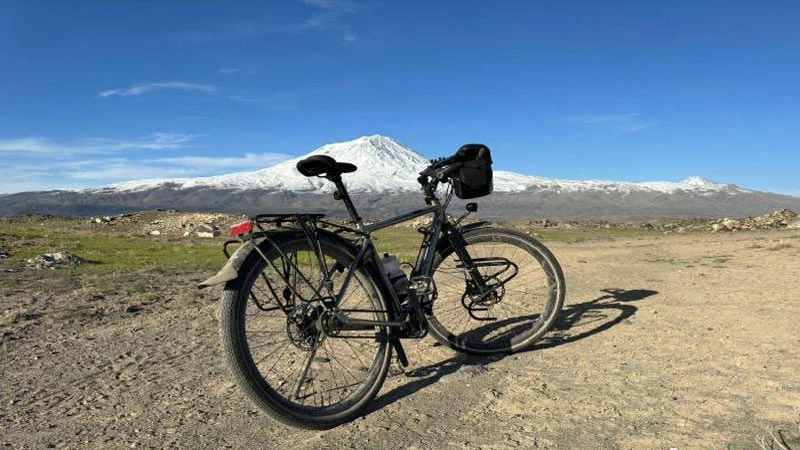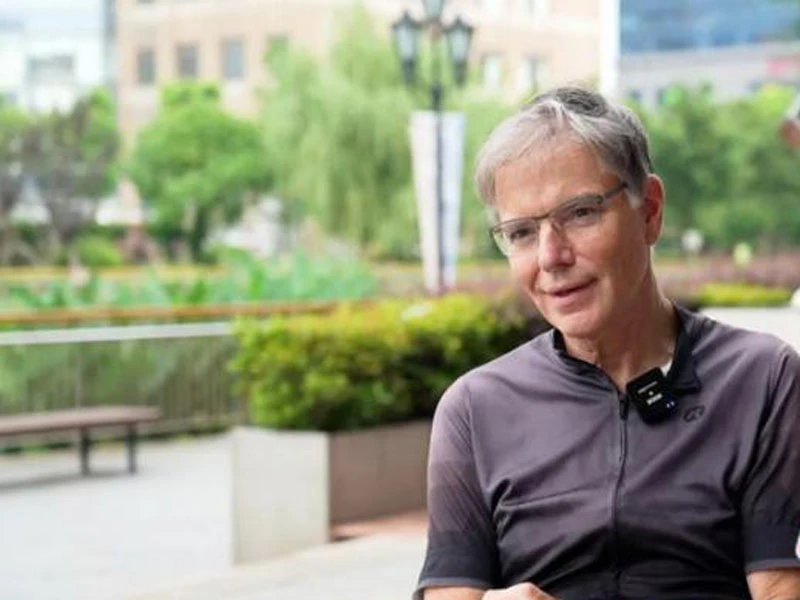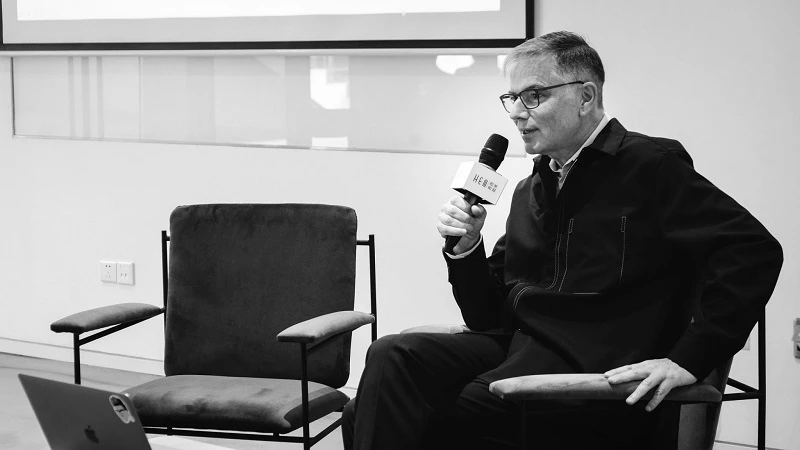From Amsterdam to Shanghai: A Ride Across Continents
Most travelers heading from Amsterdam to Shanghai would simply book a flight, endure the long haul, and arrive in a matter of hours. But for Dutch historian, author, and urban design curator Ole Bouman, this journey needed to be more than just a change in geographical location—it was a quest for understanding.
In February 2024, at over sixty years of age, Bouman mounted his bicycle in Amsterdam and set off on an extraordinary journey. Over the next 156 days, he crossed 18 countries and regions, cycling a staggering 10,756 kilometers to reach his destination: Shanghai. Carrying 45 kilograms of luggage on an 18-kilogram bicycle, he endured physical challenges, battled diverse climates, and pushed the limits of human endurance. But for Bouman, this wasn't just an adventure—it was a deeper exploration of culture, dialogue, and the search for peace.
For over a decade, Bouman had flown between Europe and China, giving lectures, curating exhibitions, and working on urban design projects. However, despite his deep involvement with Chinese culture, he felt he had only skimmed the surface. So, instead of flying yet again, he chose a slower, more thoughtful approach—one that would allow him to witness the landscapes, people, and shared histories that define the journey from West to East.

Retracing the Silk Road: A Historical Ride
Bouman's chosen route wasn't random; it was inspired by history. In 1877, German geographer Ferdinand von Richthofen introduced the term "Silk Road," which described the ancient trade routes connecting Europe and Asia. Bouman, a historian at heart, decided to follow the cultural and historical density of this ancient path, cycling through cities that had played pivotal roles in East-West interactions for centuries.
His journey took him through major cities like Vienna, Istanbul, Tehran, Urumqi, and Xi'an before finally arriving in Shanghai. Along the way, Bouman reflected on the countless travelers, merchants, and conquerors who had traversed this route for centuries. He was particularly struck by how few had undertaken such journeys purely for understanding or dialogue. As he crossed vast deserts, mountain ranges, and rivers, he couldn't help but think about how many explorers had seen the East as something to conquer rather than comprehend.
Throughout his years working in China, Bouman had noticed a tendency among Western observers to view the East through assumptions, misunderstandings, or competitive frameworks. His journey was an effort to break free from these limitations. By cycling through unfamiliar terrains and observing local ways of life firsthand, Bouman aimed to engage more deeply with the cultures he encountered, leaving behind the "lazy" assumptions many people held about the East.
Borders and Shared Humanity
Starting in the Netherlands, he noticed differences in language and culture as soon as he crossed into Germany. By the time he reached Turkey, the border between Europe and Asia had become a tangible reality, yet paradoxically, he found himself increasingly drawn to the similarities between people on either side of these borders.
"Borders are everywhere," Bouman remarked, "but so are commonalities." As he cycled through villages and cities, he observed the universal aspects of human life that transcend national divides—shared values, a love of beauty, and, of course, food. In Iran, for instance, Bouman encountered bustling marketplaces that reflected the same spirit of cultural exchange that had once defined the Silk Road. These bazaars weren't just places to buy and sell goods; they were melting pots of different cultures and traditions, embodying a dynamic "Eurasian microcosm."
While Bouman's trip involved pushing through physical and cultural boundaries, it also reminded him of the fundamental kindness that connects all people. In the cold, rainy mountains of Iran, a stranger followed him in a car, urging him to accept a ride to escape the harsh weather. The two men didn't speak the same language, didn't share the same religion, and had never met before. Yet the stranger's act of kindness left a lasting impression on Bouman, underscoring how human decency often transcends all other differences.
A Quest for Dialogue and Peace
When Bouman finally reached China in May 2024, he had already traveled through landscapes rich with history, spirituality, and human connection. Entering through Xinjiang, he journeyed across the Gobi Desert, following in the footsteps of ancient travelers along China's historic routes. In Urumqi, he experienced the vibrant blend of cultures that defines this part of the world, and in the ancient city of Dunhuang, he marveled at the Buddhist relics that had drawn pilgrims for centuries.
For Bouman, this journey wasn't just about history; it was also about discovering the contemporary pulse of China. He rode through the diverse city of Lanzhou, experienced the cultural harmony of Xi'an, and eventually followed the trail of ancient Chinese philosophy in Luoyang. Along the way, he witnessed a country that is constantly evolving, with its traditions and modernity intricately intertwined.
One of Bouman's key realizations during his trip was the profound meaning behind the Chinese character for "peace" (和平). He learned that the character "和" represents harmony, and it is composed of symbols for grain and a mouth, signifying the essential balance between people and sustenance. This idea of peace is not just the absence of conflict, but a constant effort to maintain balance and harmony between people, nature, and society. Bouman found this understanding deeply moving, as it encapsulated the essence of what he had been seeking throughout his journey—a connection between human experiences and a quest for understanding across borders.
Bouman's bicycle ride across continents may have ended, but his dialogue with the East continues. Today, his journey is on display at the Biyun Art Museum (碧云美术馆) in Shanghai, where visitors can view his bike, alongside the photographs and memories he captured along the way. Bouman himself sits at the exhibit, ready to engage with new faces and continue the conversation that started with a bicycle ride.



